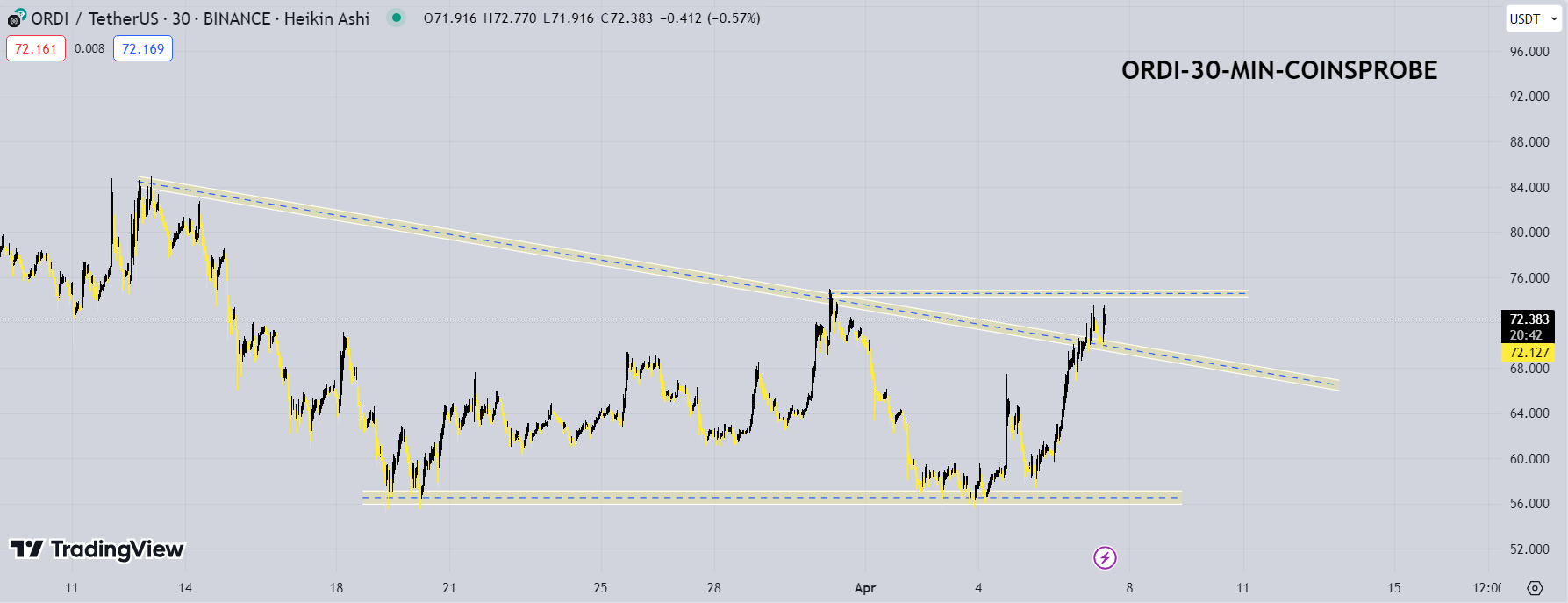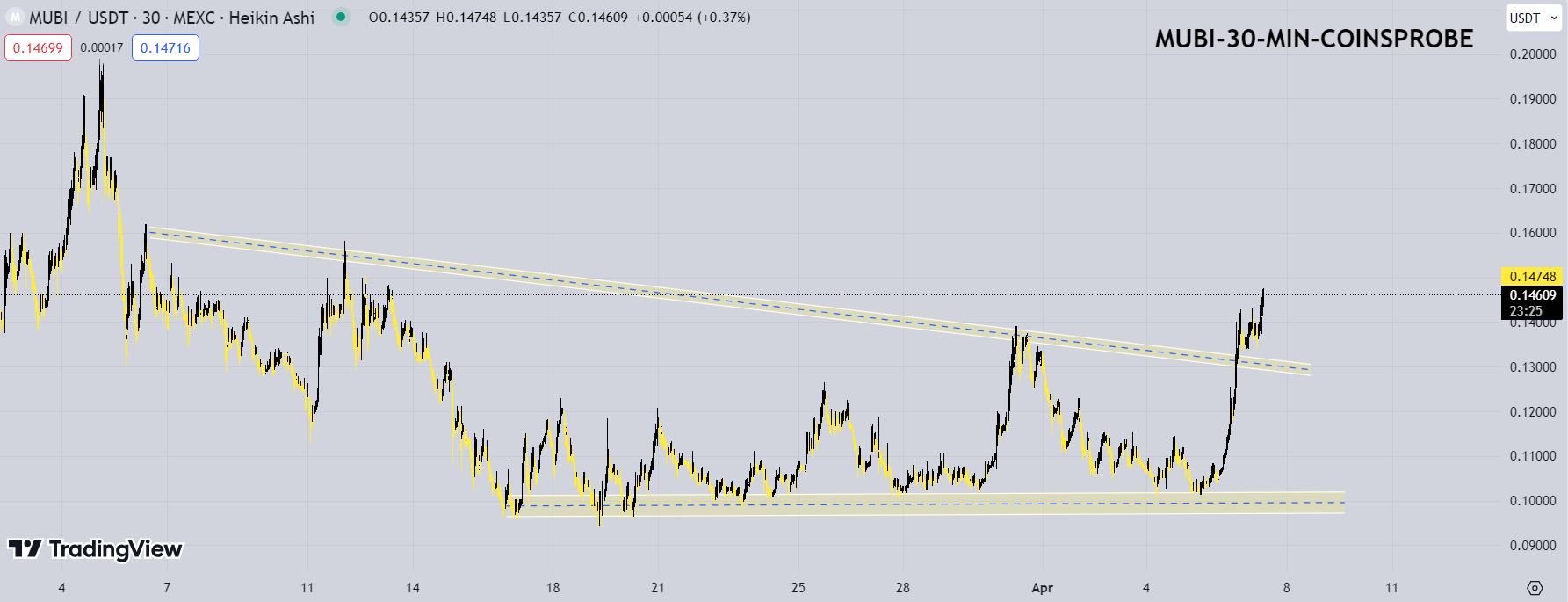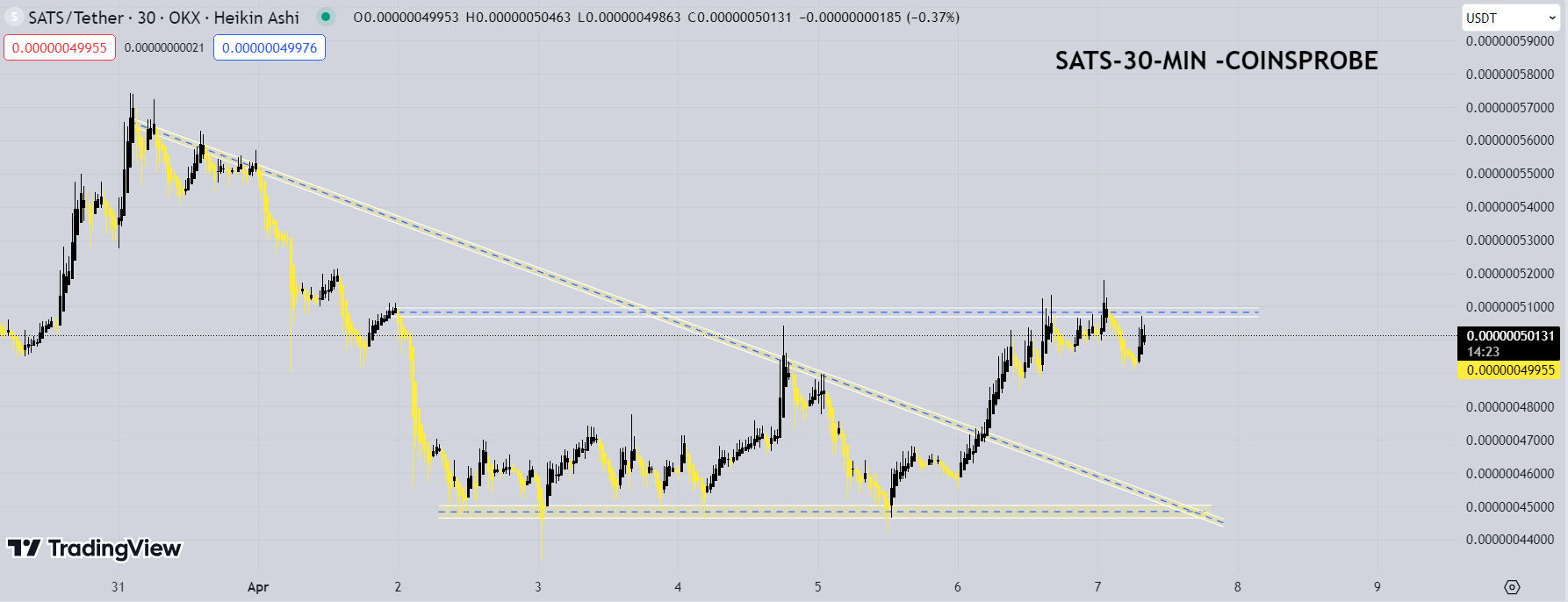
/ Explore the top 3 BRC 20 tokens – ORDI, MUBI, and SATS. Gain insights into their growth, prices, and potential.
Author: Nilesh Hembade
Date: 07 Apr 2024, 14:00 PM IST
In the cryptocurrency market, the coins are being dominated by the trend of narrative; it was early AI coins, then Solana Memecoins, and then Real World Assets Narrative. So now it might be that the next could be BRC 20 tokens. BRC-20 is an experimental token standard that enables the minting and transferring of fungible tokens on the bitcoin blockchain.
In this article, we will look at the potential BRC 20 tokens that could shine in the coming days.
Top 3 BRC 20 Tokens::
1. Ordinals (ORDI):
ORDI serves as a systematic numbering system for satoshis, providing a way to track and move individual units of Bitcoin. With a gain of over +4.96% in the last 24 hr., ORDI trades at $71.02, boasting a market cap of $1.49 billion. Recently Coinbase has announced the listing of ORDI in perpetual futures.

ORDI currently trading at $71 price zone, if it manages to cross $75 resistance level, we might see some gain in coming days.
2) Multibit (MUBI):
Multibit (MUBI) is a BRC-20 token bridge platform facilitating seamless token transfers between the Bitcoin blockchain and Ethereum Virtual Machine (EVM) networks. Launched in November 2023, MUBI has shown remarkable growth, gaining over +27% in the last 24hr., with a current trading price of $0.1464 with market cap of $139 million.

MUBI has already broken out of the downward trendline and may keep surging in the coming days.
3) SATS Ordinals (SATS):
SATS leverages the ordinals protocol, a pioneering approach that facilitates the creation of token economies on the Bitcoin network. In the last 24 hr., SATS has surged by +0.52%, currently trading at $0.0004978 with a market cap of $1.05 billion.

If the SATS token manages to cross resistance at the $0.00051 level, we can see some more green candles in SATS.

Disclaimer:
Cryptocurrency investments carry inherent risks, including volatility and potential loss of capital. The information provided in this article is for educational and informational purposes only and should not be construed as financial advice
